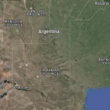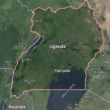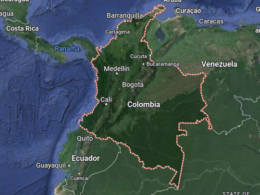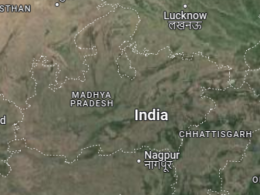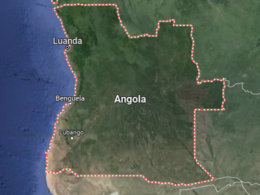Vietnam is one of the world’s largest exporters of cashew nuts.
The country is the second-largest producer of coffee in the world after Brazil.
Vietnamese cuisine features a unique blend of five taste elements: sweet, salty, bitter, sour, and umami.
The traditional Vietnamese musical instrument, the dan bau, is a monochord zither that can produce a wide range of sounds.
The country is home to the world’s largest cave, Son Doong, located in Phong Nha-Ke Bang National Park.
Vietnam has a significant number of pagodas and temples, many of which are centuries old.
The country has 54 ethnic groups, each with its own distinct culture and traditions.
The Vietnamese language has six different tones, making it a tonal language.
Ao Dai, the traditional Vietnamese dress, is an iconic symbol of Vietnamese culture.
Vietnam has a rich tradition of water puppetry, an art form that dates back to the 11th century.
The Mekong Delta is known as the “Rice Bowl” of Vietnam due to its extensive rice production.
Pho, a traditional Vietnamese soup, is one of the most popular and well-known dishes in the country.
Vietnam has a significant number of UNESCO World Heritage Sites, including Ha Long Bay and Hoi An Ancient Town.
The country has a vibrant tradition of silk weaving, particularly in villages like Van Phuc.
Vietnam is home to several rare and endangered species, such as the saola, also known as the “Asian unicorn”.
The country has a unique form of folk music called Ca Tru, which involves complex lyrics and traditional instruments.
Vietnamese people celebrate the Lunar New Year, known as Tet, with various customs and traditions.
The country has a rich tradition of martial arts, including Vovinam and Binh Dinh.
Vietnam is known for its floating markets, particularly in the Mekong Delta region.
The country has a tradition of making and drinking green tea, with many variations found across the regions.
Vietnam is famous for its conical hats, known as Non La, which are made from palm leaves.
The country has a significant number of karst landscapes, particularly in the northern region.
Vietnam has a unique culinary tradition of eating balut, a fertilized duck egg.
The country has a rich tradition of lacquer painting, which dates back hundreds of years.
Vietnam is one of the few countries where water buffalo are still used for plowing fields.
The country has a tradition of making ceramic pottery, particularly in the village of Bat Trang.
Vietnam has a unique musical tradition of Quan Ho, a type of folk singing from the Bac Ninh province.
The country has a vibrant street food culture, with dishes like banh mi and bun cha being popular among locals and tourists.
Vietnam is home to the ancient city of Hue, which was the imperial capital of the Nguyen Dynasty.
The country has a rich tradition of calligraphy, often seen during the Lunar New Year celebrations.
Vietnam has a diverse range of ecosystems, from tropical rainforests to mangrove swamps.
The country has a unique tradition of making snake wine, which is believed to have medicinal properties.
Vietnam has a significant number of French colonial buildings, particularly in cities like Hanoi and Ho Chi Minh City.
The country is known for its traditional craft villages, where artisans produce everything from silk to ceramics.
Vietnam has a rich tradition of epic poetry, with works like “The Tale of Kieu” being highly regarded.
The country has a vibrant tradition of boat racing, particularly during festivals.
Vietnamese cuisine often features fresh herbs and vegetables, reflecting the country’s emphasis on healthy eating.
The country has a unique form of traditional theater called Tuong, which combines music, dance, and drama.
Vietnam has a significant number of national parks, preserving its diverse flora and fauna.
The country has a tradition of making rice paper, which is used in many traditional dishes.
Vietnam is home to the world’s largest cave system, Hang Son Doong.
The country has a rich tradition of embroidery, particularly in villages like Quat Dong.
Vietnamese people have a unique tradition of ancestor worship, which plays a significant role in their culture.
The country has a significant number of ancient citadels, such as the Thang Long Imperial Citadel.
Vietnam is known for its vibrant markets, where a wide range of goods, from food to handicrafts, can be found.
The country has a tradition of making bamboo products, including furniture and utensils.
Vietnamese cuisine often features fish sauce, which is a staple ingredient in many dishes.
The country has a unique tradition of kite flying, particularly during festivals.
Vietnam is home to several important religious sites, such as the Perfume Pagoda.
The country has a rich tradition of storytelling, often passed down through generations.
Vietnamese people celebrate various festivals throughout the year, such as the Mid-Autumn Festival.
The country has a significant number of ancient tombs and mausoleums, particularly in Hue.
Vietnam has a tradition of making herbal medicines, using a wide range of local plants and herbs.
The country has a vibrant tradition of dance, with various forms reflecting different regions and cultures.
Vietnam is known for its extensive network of rivers and canals, particularly in the Mekong Delta.
The country has a tradition of making bamboo and rattan products, which are both functional and decorative.
Vietnamese people have a unique tradition of making and drinking iced coffee, often with sweetened condensed milk.
The country has a significant number of historical museums, preserving its rich history and heritage.
Vietnam is home to several UNESCO Biosphere Reserves, highlighting its commitment to environmental conservation.
The country has a rich tradition of making lacquerware, which is both functional and decorative.
Vietnamese people celebrate various harvest festivals, reflecting the country’s agricultural heritage.
The country has a tradition of making paper lanterns, particularly in Hoi An.
Vietnam is known for its traditional folk games, often played during festivals and celebrations.
The country has a significant number of ancient stone carvings, particularly in the Cham temples.
Vietnamese cuisine features a wide range of noodle dishes, from pho to bun bo Hue.
The country has a tradition of making coconut products, from coconut candy to coconut oil.
Vietnam has a rich tradition of making and flying paper kites, often seen during festivals.
The country has a unique form of traditional painting called Dong Ho, which uses natural materials for colors.
Vietnamese people celebrate various cultural festivals, such as the Huong Pagoda Festival.
The country has a significant number of historic pagodas and temples, reflecting its Buddhist heritage.
Vietnam is known for its vibrant craft markets, where handmade goods are sold.
The country has a tradition of making incense, which is often used in religious ceremonies.
Vietnamese cuisine often features fermented foods, such as pickled vegetables and fish sauce.
The country has a unique form of traditional music called Don Ca Tai Tu, which is popular in the southern region.
Vietnam is home to several important archaeological sites, such as My Son Sanctuary.
The country has a rich tradition of making straw and reed products, including mats and baskets.
Vietnamese people have a unique tradition of making and flying lanterns, particularly during the Mid-Autumn Festival.
The country has a significant number of traditional craft villages, where skills are passed down through generations.
**Please note that this post may contain affiliate links. When booking through one of our links, we earn a small kickback at no extra cost to you and it’s a big help to keep the site up and running.



